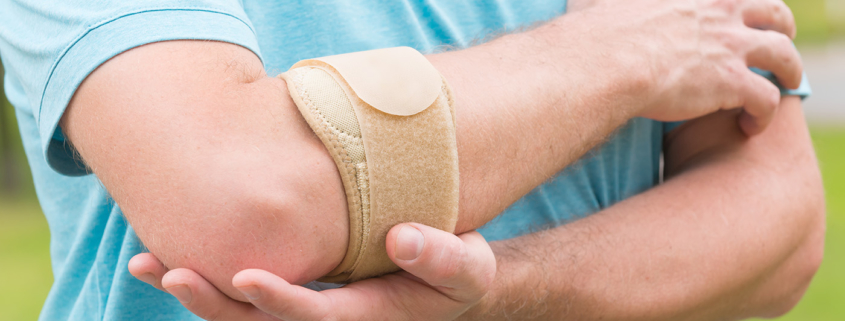What is Golfer’s Elbow?
/in Article /by Alta HealthGolfer’s Elbow causes, symptoms, and treatments
The presence of pain when applying force to a handheld dynamometer can indicate a range of conditions – including Medial Epicondylitis, or Golfer’s Elbow as it’s more commonly known.
Golfer’s Elbow is an overuse injury caused by inflamed tendons on the inside of the elbow joint. It can also be known as Baseball Elbow, Forehand Tennis Elbow or even Suitcase Elbow. It is characterised by pain from the elbow to the wrist on the medial – or inside – of the elbow.
It’s a common complaint for individuals engaged in athletic pursuits such as golf, tennis or any other similar endeavour featuring repetitive use of the arms.

What causes Golfer’s Elbow?
Golfer’s Elbow usually occurs as a result of excessive force being applied to the forearm flexor tendons during a golf swing or similar movement.
The onset of pain usually coincides with repetitive force application during a golf swing, tennis serve – particularly slice or kick serves, javelin throw, carrying a heavy suitcase or utilising hand tools on a repetitive basis.
Recognising the signs and symptoms of Golfer’s Elbow
The most common symptom of Golfer’s Elbow is pain on the inside of the elbow joint. The pain is usually felt when flexing the wrist towards the elbow, gripping, or persisting with the repetitive movement that caused the injury in the first place.
Diagnosing a case of Golfer’s Elbow
Golfer’s Elbow is most commonly diagnosed by a physical examination performed by a Physiotherapist, Doctor or Orthopaedic Specialist. The patient will be asked to resist force applied to the wrist. A positive diagnosis is indicated by pain occurring during the assessment.
How to treat Golfer’s Elbow
The initial and most common form of treatment for Golfer’s Elbow is to cease the repetitive activity that caused the symptoms to occur. Additional measures in the initial treatment phase include icing, bracing and anti-inflammatory medication. A Golfer’s Elbow brace will ensure that the elbow is compressed and stabilised, allowing it to heal properly.
Once inflammation settles, an Exercise Physiologist or Physiotherapist should be consulted in order to prescribe an appropriate exercise rehabilitation program. In most cases, Golfer’s Elbow takes approximately three to six months to heal.
If pain persists, as a last resort, corticosteroid injections or in some rare cases surgery may be an alternative course of treatment.
How can VALD help with Golfer’s Elbow?
VALD recently launched a handheld dynamometer and inclinometer named DynaMo capable of performing more than 300 strength and range of motion tests.
Featuring five NFC-enabled Smart Attachments – including an adjustable Grip Strength Attachment – DynaMo allows practitioners to perform push and pull tests, measure grip strength and assess range of motion, with the objective data captured by the device stored automatically against a client’s profile.
By using DynaMo to measure the resistance of force to the wrist and any presence of pain, practitioners can more accurately diagnose Medial Epicondylitis and prescribe an appropriate rehabilitation program.
To learn more about DynaMo and how dynamometers can be used in the treatment of common conditions like Golfer’s Elbow, visit: valdhealth.com/dynamo.

This article was written by Eddie Hess, an Accredited Exercise Physiologist with a Master’s in Clinical Exercise Physiology and a Bachelor in Exercise and Sports Science. Eddie specialises in musculoskeletal rehabilitation of post-surgical clients and has broad clinical experience.


